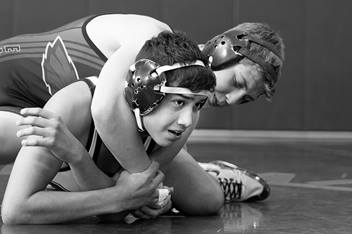Cauliflower Ear
For many years cauliflower ear has been a distinguishing deformity seen in wrestlers, boxers and martial artists. However, with the introduction of new equipment, cauliflower ear is beginning to surface in other sports where blunt trauma to the ear may occur, such as in rugby.
Cauliflower ear is a very preventable condition but if left untreated may create problems down the line. The best way to beat cauliflower ear is prevention and early treatment.
What Is Cauliflower Ear?
Cauliflower ear, or “hematoma auris”, is a collection of blood between the cartilage of the ear and the skin. When the ear lobe is repetitively struck or bent, as in taking a helmet on and off, the underlying cartilage is traumatized. A blood clot forms under the skin, separating the skin from the underlying cartilage.
Signs and symptoms include:
- Swelling
- Redness
- Bruising on or around the ear
It was coined the term cauliflower ear, because of the appearance of the ear, as the cartilage tends to fold over on itself creating lumps resembling the head of a cauliflower. Due to the limited blood supply to the ear, it then turns pale making the resemblance more remarkable. In extreme cases the ear drum and canal may be disrupted.
Cauliflower Ear
Access additional causes, symptoms and treatment information.
How Is Cauliflower Ear Treated?
It is important to consult a physician at the earliest signs of cauliflower ear to initiate prompt treatment. If left untreated, the cartilage can die, leaving a permanent deformity that is very difficult to reconstruct.
Treatment usually involves the evacuation of the accumulated blood and a compressive dressing. The compressive dressing is worn to re-establish the connection between the skin and underlying cartilage. The ear is also vulnerable to infections, making it important to keep that area clean and bandaged. A course of antibiotics or topical cream may be given as a preventative tool.
How Can I Prevent Cauliflower Ear?
The best way to prevent cauliflower ear is to wear protective headgear. In wrestling, headgear is a requirement during matches but not necessarily during practice. It is important to wear headgear any time the ear may come in contact with a rugged surface or another person for an extended period of time, practice included.
It is also important in sports wearing a helmet that the athlete is instructed how to properly maintain and remove the equipment. Football helmets are meant to fit snuggly, but too tight of a fit may mean difficulty putting on or removing the helmet.
Consult your primary care physician for more serious injuries that do not respond to basic first aid. As an added resource, the staff at Nationwide Children’s Hospital Sports Medicine is available to diagnose and treat sports-related injuries for youth or adolescent athletes. Services are available in multiple locations. To make an appointment, call (614) 355-6000 or schedule an appointment online.

